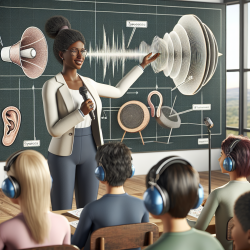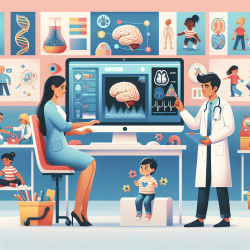As educators, therapists, and specialists working within the educational system, our ultimate goal is to create an environment conducive to learning for all students, including those with hearing impairments. The challenges of facilitating effective classroom listening for these students are multifaceted, encompassing hearing considerations, speech acoustics, room acoustics, and the use of amplification technology. Drawing insights from Frederick S. Berg's "Facilitating Classroom Listening," this blog post aims to provide practitioners with strategies to enhance their skills in supporting students with hearing impairments, thereby improving classroom listening for all.
Hearing and Speech Considerations
Understanding the basics of hearing and speech is fundamental in addressing classroom listening challenges. Hearing loss can significantly impact a student's ability to access verbal instruction, engage in classroom discussions, and interact with peers. It is crucial for educators and speech-language pathologists (SLPs) to recognize the symptoms of hearing loss and implement strategies to support these students effectively. This includes conducting regular hearing screenings, promoting hearing conservation, and educating staff and students about the implications of hearing loss.
Similarly, an understanding of speech acoustics—how speech sounds are produced and perceived—enables practitioners to develop programs that enhance speech clarity and intelligibility. This might involve speech therapy interventions, adjustments in the way teachers articulate and project their voices, and modifications to classroom materials to support visual learning.
Room Acoustics and Amplification
Room acoustics play a significant role in how well students can hear and process spoken information. Poor acoustics, characterized by excessive noise, reverberation, and inadequate sound insulation, can exacerbate the listening challenges faced by students with hearing impairments. Practitioners can advocate for acoustic modifications to classrooms, such as installing sound-absorbing materials, minimizing background noise, and arranging seating to optimize listening conditions.
Amplification technology, including hearing aids and FM systems, offers valuable support for students with hearing impairments. Educators and SLPs should work closely with audiologists to ensure that students' amplification devices are appropriately fitted and maintained. Additionally, training for teachers on how to use and integrate these technologies into their teaching practices is essential for maximizing their benefits.
Strategies for Facilitating Classroom Listening
- Implement an Inclusive Communication Policy: Encourage the use of inclusive communication strategies that benefit all students, such as facing the class while speaking, using visual aids, and providing written summaries of verbal instructions.
- Collaborate with Audiologists and SLPs: Regular collaboration between educators, audiologists, and SLPs is critical for identifying the needs of students with hearing impairments and developing comprehensive support plans.
- Utilize Assistive Listening Devices: Explore the use of assistive listening devices (ALDs) beyond traditional hearing aids, such as sound field systems, which can improve the listening environment for the entire class.
- Adopt Flexible Teaching Methods: Incorporate a variety of teaching methods to cater to different learning styles and needs, including hands-on activities, visual presentations, and group work that encourages peer support and interaction.
- Create an Acoustically Friendly Classroom: Advocate for and implement changes to classroom design and layout that enhance acoustics, such as reducing clutter, using carpets and soft furnishings, and positioning students with hearing impairments optimally.
Conclusion
By implementing the strategies outlined above, based on the insights from "Facilitating Classroom Listening," practitioners can significantly improve the listening and learning experiences of students with hearing impairments. It is through our collective efforts and dedication to inclusive education that we can ensure all students have the opportunity to reach their full potential in the classroom.
To deepen your understanding of the strategies and principles discussed, and to explore further into the topic of facilitating classroom listening, Facilitating Classroom Listening.










